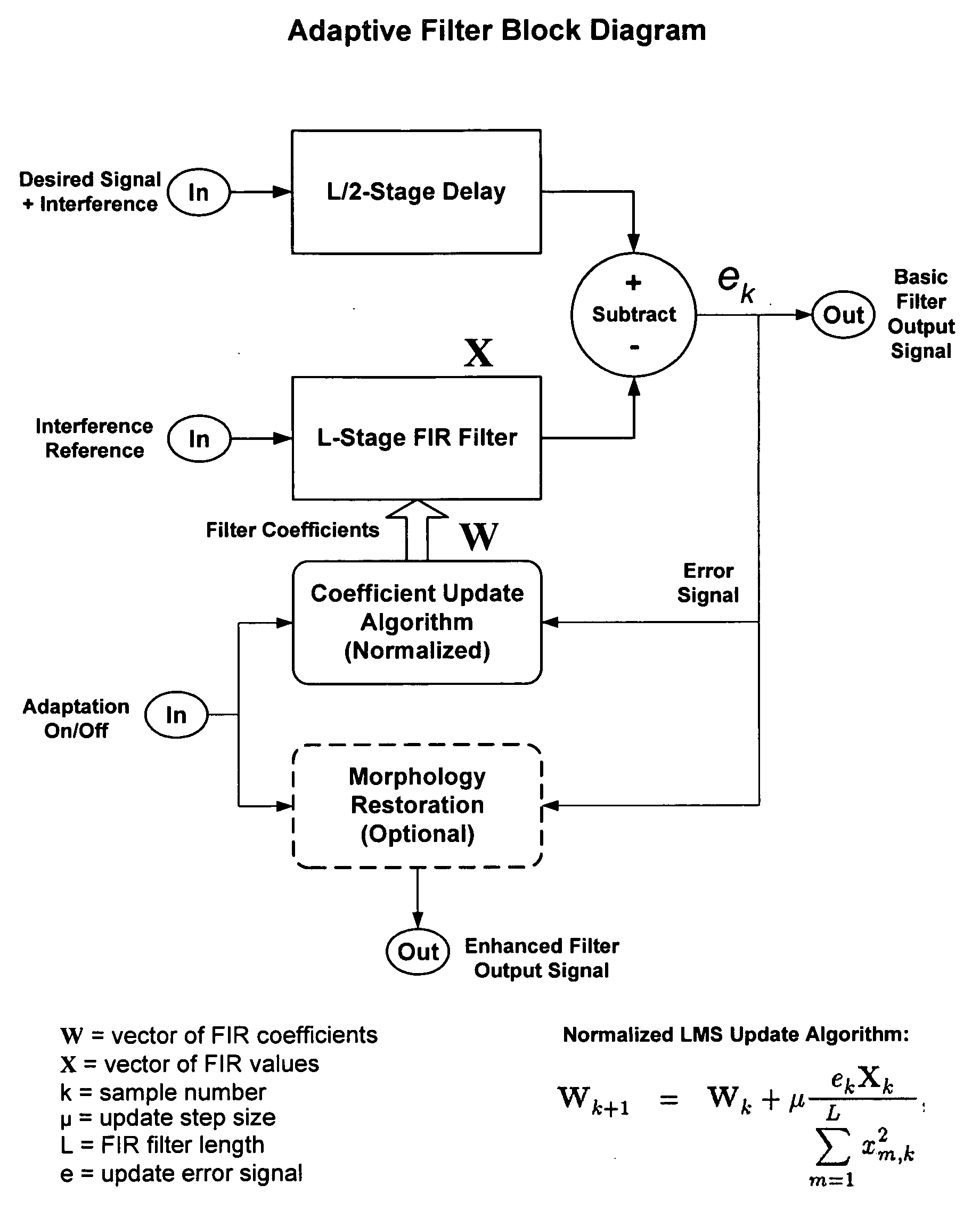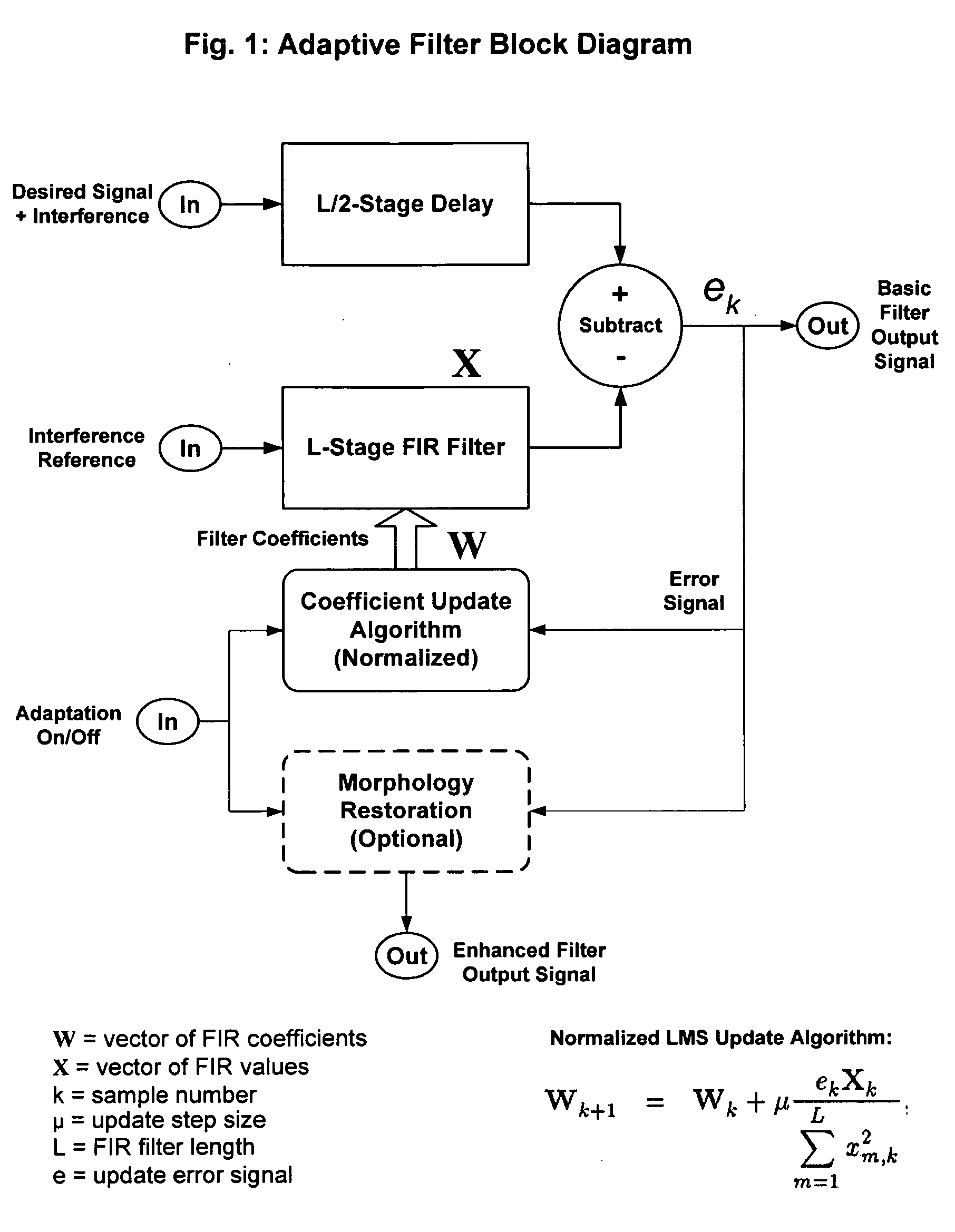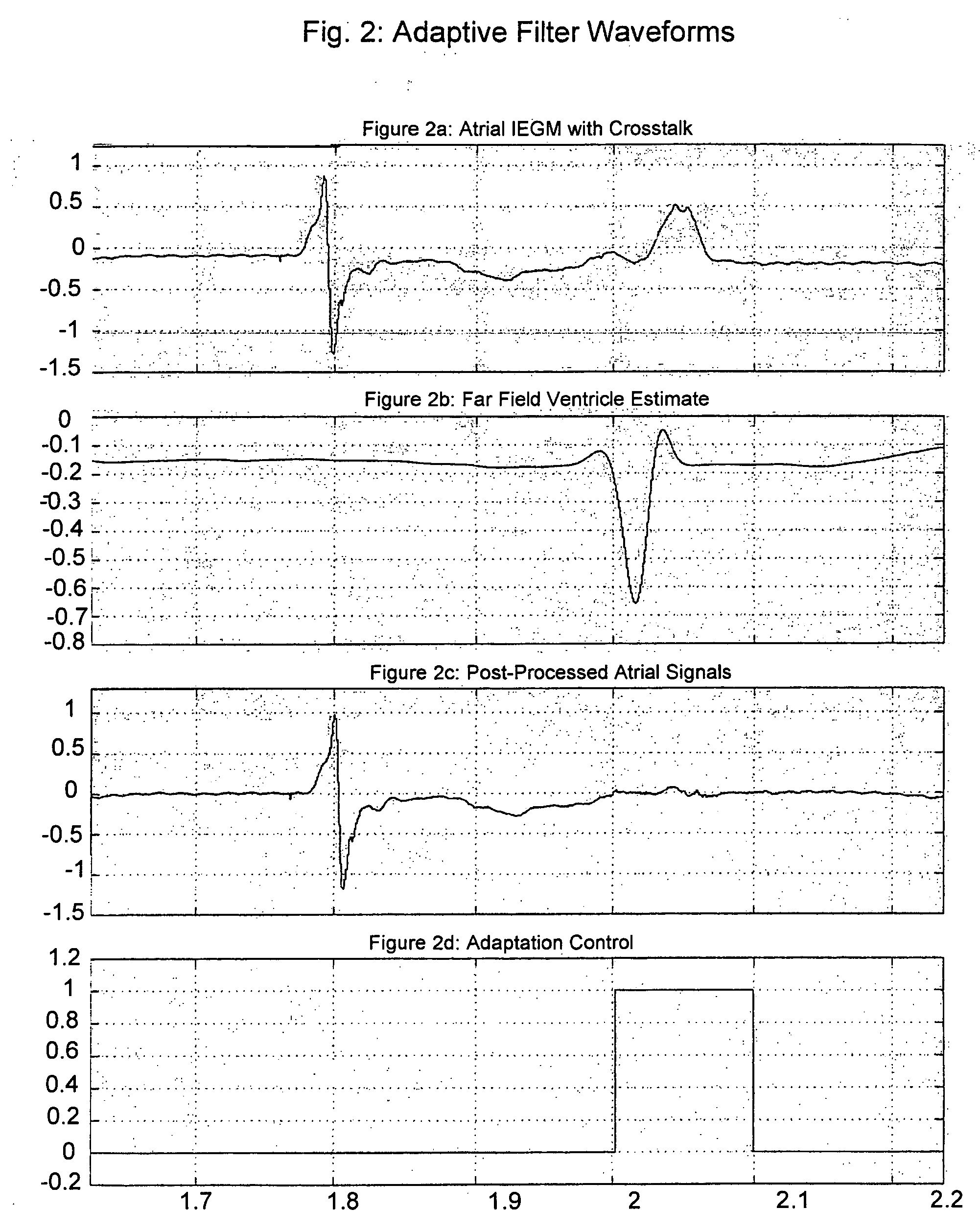Method and apparatus for deducing far-field interchamber interference in an implanted medical device
a far-field interchamber and medical device technology, applied in the field of far-field interchamber interference deducing, can solve the problems of crosstalk between chambers, inability to act on, and error of commission and omission of electrotherapy errors, so as to avoid instability of the least-mean-square filter coefficient update algorithm and effectively reduce the computational workload of the implant devi
- Summary
- Abstract
- Description
- Claims
- Application Information
AI Technical Summary
Benefits of technology
Problems solved by technology
Method used
Image
Examples
Embodiment Construction
[0034]FIG. 8 gives an overview over the environment in which the claimed invention is used. FIG. 8 shows a pacemaker PM with an atrial input connector 10 and a ventricular input connector 12. The pacemaker PM is connected to a pacing and sensing electrode lead 20 having two atrial electrodes 22 and 24 and two ventricular electrodes 26 and 28. The atrial electrodes 22 and 24 are connected to the atrial connector 10 via leads 32 and 34. Likewise, the ventricular electrodes 26 and 28 are connected to the ventricular connector 12 via leads 36 and 38.
[0035] The ventricular electrodes 26 and 28 are placed in the apex of the right ventricle RV of a human heart. The atrial electrodes 22 and 24 are placed in the right atrium RA of the human heart. The electrode lead 20 is fed to the right atrium RA and the right ventricle RV via the vena cava superior VCS.
[0036] The arrangement shown in FIG. 8 is generally known. With respect to the claimed invention it should be noted, that the atrial ele...
PUM
 Login to View More
Login to View More Abstract
Description
Claims
Application Information
 Login to View More
Login to View More - R&D
- Intellectual Property
- Life Sciences
- Materials
- Tech Scout
- Unparalleled Data Quality
- Higher Quality Content
- 60% Fewer Hallucinations
Browse by: Latest US Patents, China's latest patents, Technical Efficacy Thesaurus, Application Domain, Technology Topic, Popular Technical Reports.
© 2025 PatSnap. All rights reserved.Legal|Privacy policy|Modern Slavery Act Transparency Statement|Sitemap|About US| Contact US: help@patsnap.com



